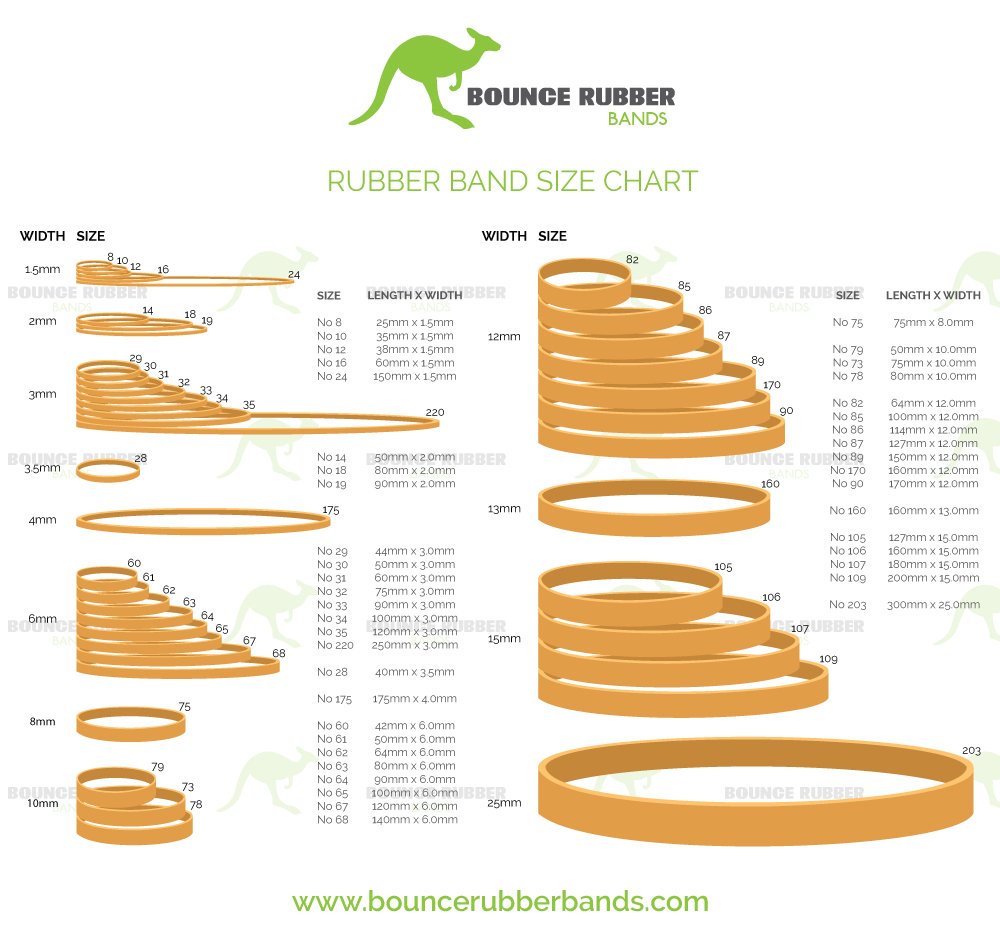The Ultimate Guide to Rubber Band Sizes
Rubber bands might seem like simple everyday items, but did you know that they come in a variety of sizes to suit different needs? Whether you're bundling small items, securing documents, or even experimenting with DIY crafts, understanding rubber band sizes is essential for getting the job done effectively. In this comprehensive guide, we'll delve into the world of rubber band sizes.
Exploring Rubber Band Sizes
Rubber bands are versatile tools, and their sizes are denoted by a numbering system that indicates their length, width, and thickness. This system helps you choose the right band for your specific task.
1. Length: The length of a rubber band is measured when the band is laid flat and unstretched from end to end. Longer rubber bands are suitable for larger bundles, while shorter ones work well for smaller items.
2. Width: The width of a rubber band refers to its width when laid flat and unstretched. Wider bands offer more strength and durability, making them ideal for heavy-duty tasks.
3. Thickness: The thickness, often called wall, determines the band's cross-sectional thickness. Thicker bands are stronger and less likely to break.
The Numbering System
Rubber band sizes are often represented by a numbering system, such as 8, 16, 32, and 64. Each number corresponds to a specific size, with higher numbers indicating larger and stronger bands. For example:
Size 8 rubber band: Ideal for small bundles and objects, this size is shorter and thinner, making it perfect for lightweight tasks.
Size 16 rubber band: A medium-sized rubber band suitable for various everyday applications, striking a balance between size and strength.
Size 31 or 32 rubber band: If you need to secure larger items or create substantial bundles, these sizes offer greater length and width. Our size 31 band was used to secure vegetables and fruit for one of our customers.
Size 64 rubber band: This size is wider and thicker, designed for heavy-duty tasks that require exceptional strength and durability. Our size 64 rubber band is also another commonly used band to secure vegetables and fruit - seen here in red.
Size 86 rubber band: Typically, larger and thicker than the average rubber band, which means it offers a higher level of strength and durability. These rubber bands are often used for heavy-duty applications that require a secure and reliable hold. For example, one of our customers was after a specific size to propel his handmade wooden lawn mower toy. Size 86 was the perfect fit for the job!
Bounce Rubber Bands Sizing Chart
For a closer look at rubber band sizes and their practical applications, let's turn to the Bounce Rubber Bands sizing chart.
Here at Bounce Rubber Bands, we provide valuable information about rubber band sizes, including dimensions and recommended uses. We offer a range of sizes designed to cater to various needs, from everyday use to industrial applications.
Understanding rubber band sizes is essential for selecting the right band for your task, whether it's organising paperwork, securing objects, or crafting. The numbering system, combined with the length, width, and thickness measurements, helps you find the perfect fit. By referring to sources like the Bounce Rubber Bands sizing chart, you can make informed choices that align with your needs. Choose wisely, and let the humble rubber band make your tasks smoother and more efficient!
Bounce Rubber Bands takes great pride in their products, service levels and commitment to client satisfaction. We offer industry-best pricing and work with reputable distributors around Australia and internationally. If you have any questions or expressions of interest in becoming one of our reputable re-sellers, please contact Bounce Rubber Bands today!





